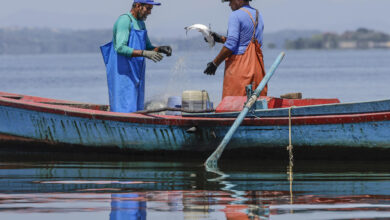Scientists Find Puerto Rico Water Contaminated by Coal Ash

Investigations reveal heavy metals and carcinogens in drinking water in southern Puerto Rico, raising urgent calls for removing coal ash contaminating local aquifers.
In the lush landscapes of southern Puerto Rico, an environmental concern is brewing that contrasts sharply with the region’s natural beauty. Recent findings by the Colegio de Químicos de Puerto Rico (CQPR) have unveiled alarming levels of heavy metals and carcinogens in the drinking water of Guayama and Salinas, areas unfortunately situated near coal ash deposits. This revelation has sparked significant anxiety among local communities and environmental activists, calling for immediate governmental and community action.
Investigating Water Quality Concerns
The investigation, initiated by growing concerns from residents and conflicting reports about water sources, focused on the water quality in areas adjacent to more than two million tons of coal ash deposited over the years. The CQPR’s findings indicated that, although the levels of contaminants were below the maximum limits set by the U.S. Environmental Protection Agency (EPA), the presence of toxic substances typically associated with coal ash was undeniable.
The issue of coal ash pollution is expected in Puerto Rico but reflects a broader challenge across Latin America, where industrial waste management practices lag behind growing environmental awareness. Countries such as Chile and Colombia have faced similar issues with industrial pollutants leaching into water supplies, indicating a regional struggle with enforcing environmental protections in areas compromised by industrial waste.
Much of the coal ash contamination in Puerto Rico originates from the island’s reliance on coal-fired power plants. The ash, a byproduct of coal combustion, contains a range of harmful heavy metals like arsenic, chromium, and lead, known for their long-term health risks, including cancer. Historically, these ashes have been deposited in landfills or used in construction, often without adequate safeguards to prevent leaching into water sources.
Community Concerns Validated
The recent tests conducted by the CQPR came after residents reported inconsistencies in the water supply’s origin—whether drawn directly from local wells or redirected from the Guayama plant, which processes water from the Patillas River. This uncertainty led the CQPR to perform independent water quality tests directly from household taps in the affected areas.
Maria Santiago, president of the CQPR, stated in a press release, “The test results have validated the community’s concerns. The presence of heavy metals and carcinogens characteristic of coal ash was evident, reinforcing the urgency to address this issue comprehensively.”
In response to these findings, the CQPR has made several recommendations. Top among them is the complete removal of coal ash from the island to prevent further contamination of the aquifer, a critical source of fresh water for southern Puerto Rico. Additionally, they have called for continuous monitoring of metal levels in the water to safeguard public health.
This environmental predicament is exacerbated by Puerto Rico’s unique status as a U.S. territory, which sometimes complicates the direct application of federal environmental standards and the allocation of resources for environmental protection. Despite these challenges, local entities like the CQPR are stepping forward to advocate for the communities affected by these oversights.
The coal ash issue in Puerto Rico is a stark reminder of the broader implications of fossil fuel dependence and the need for stricter regulations on waste disposal practices. It also highlights the growing environmental justice movement within the island, which is increasingly vocal about the disproportionate impact of ecological neglect on low-income and marginalized communities.
A Critical Juncture for Environmental Policy
The case of Guayama and Salinas is a critical juncture for Puerto Rico’s environmental policy. It calls for a transition towards more sustainable energy sources and waste management practices prioritizing public health and ecological integrity. The island’s struggle mirrors the global challenge of balancing industrial activity with environmental sustainability. This discourse is particularly poignant in regions like Latin America, where industrial growth often outpaces ecological regulation.
Also read: Puerto Rico’s Renewable Energy as a Path to Economic Growth
As Puerto Rico grapples with these complex challenges, community activism and scientific advocacy become more crucial. These efforts aim to rectify current issues and forge a framework for more responsible governance and community engagement in environmental matters, ensuring a safer, healthier future for all residents of the island.




